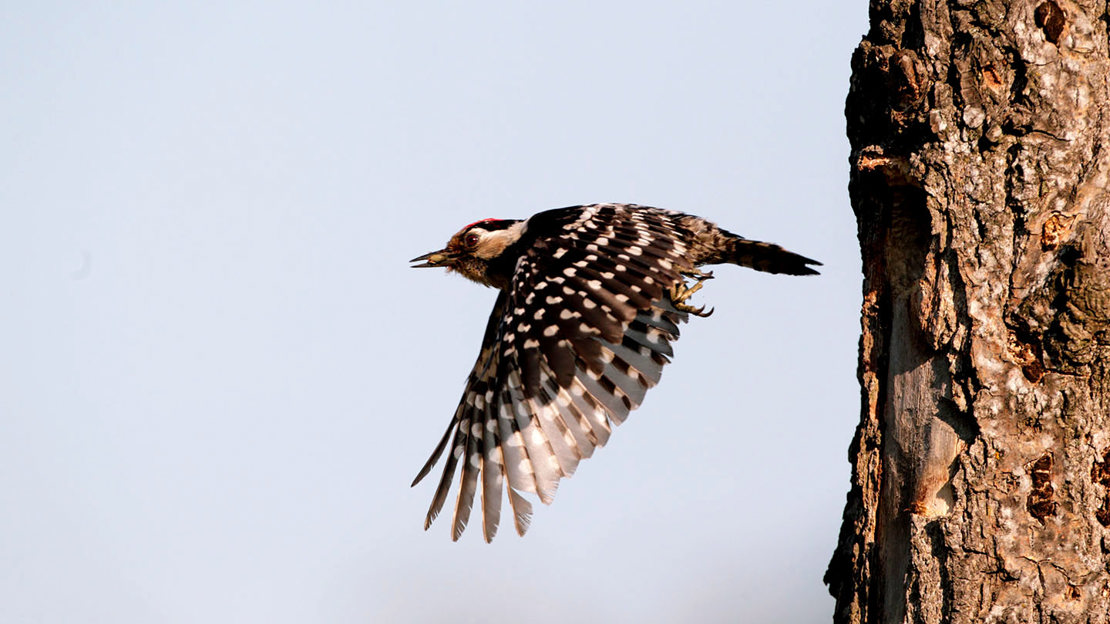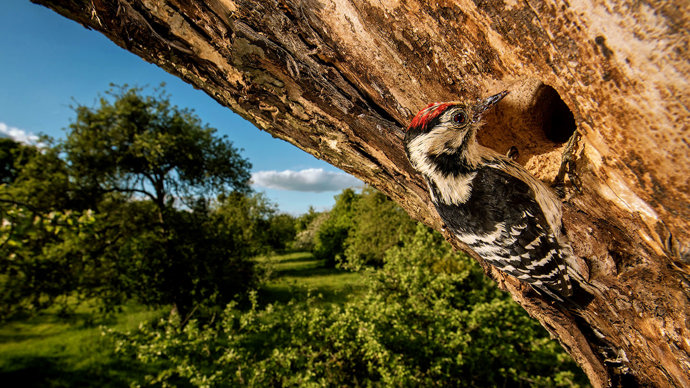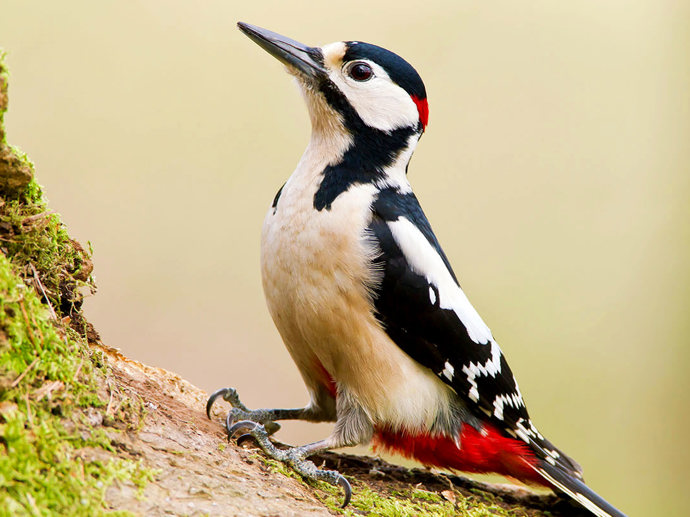Common names: lesser spotted woodpecker
Scientific name: Dryobates minor
Family: Picidae (woodpeckers)
Habitat: mature broadleaved woodland
Diet: insects and invertebrates
Predators: sparrowhawks, great spotted woodpeckers take chicks
Origin: native
Secretive tree-top dweller. The lesser spotted is our smallest, and rarest, woodpecker. These woodland specialists are one of the UK’s fastest-declining bird species.

Common names: lesser spotted woodpecker
Scientific name: Dryobates minor
Family: Picidae (woodpeckers)
Habitat: mature broadleaved woodland
Diet: insects and invertebrates
Predators: sparrowhawks, great spotted woodpeckers take chicks
Origin: native
These birds have a black and white head, with a bright red cap on males. They have a short and powerful beak, black wings with white bars on the back and a white breast with dark streaks.
Lesser spotted woodpeckers are small birds, roughly the same size as a sparrow.
Not to be confused with: the great spotted woodpecker. Their diminutive size helps to distinguish them from their much larger cousin, which has a red rump and lacks the white bars found on the wings of the lesser spotted.

Credit: Evan Bowen Jones / Alamy Stock Photo
Lesser spotted woodpeckers feed on insects and invertebrates. The species’ powerful beak allows it to peck into dead and rotten wood to access the beetle larvae living within. Aphids and other insects are also taken from tree trunks and branches.
The New Forest is one of the best places to see lesser spotted woodpeckers.
Lesser spotted woodpeckers raise their chicks in holes within old trees. These cavities are often created by the birds, using their powerful beaks to drill into the wood. Four to six eggs are normally laid, hatching after around two weeks. The chicks spend roughly three weeks in the nest before fledging.
Like great spotted woodpeckers, lesser spotted woodpeckers drum on trees with their beaks to proclaim their territory and warn off rivals.

Credit: Vasiliy Vishevskiy / Alamy Stock Photo
The lesser spotted woodpecker is a mature-woodland specialist, relying on the old, dead and rotting trees found in this habitat. It may also occur in parks and orchards which have a sufficient number of old trees. This species is rare, with the greatest numbers found in southern England, and scattered populations in Wales and further north. It is absent from Scotland and Ireland.

These birds have a special shock-absorbent skull that protects the brain from damage when drumming.
Being both rare and shy, the lesser spotted woodpecker is not easy to spot. Listen out for its drumming and be sure to look up, as these birds spend most of their time high up near the tops of trees.

Credit: Sam Hobson / naturepl.com
The lesser spotted woodpecker population is estimated to have fallen by 83% since 1970, with no more than 2,000 pairs thought to be left in the UK. The ongoing loss of ancient and mature woodland is thought to be a key factor in this decline. The removal of dead and rotting wood may have also had an impact. The lesser spotted woodpecker may have been affected by the growing great spotted woodpecker population too.
Unlike most birds, lesser spotted woodpeckers have two forward facing toes and two backward facing toes. This allows them to stand vertically on tree trunks.


Amy Lewis • 30 Sept 2021
Learn to tell the difference between Britain's three resident woodpecker species with our quick guide to their appearance, sounds and behaviour.